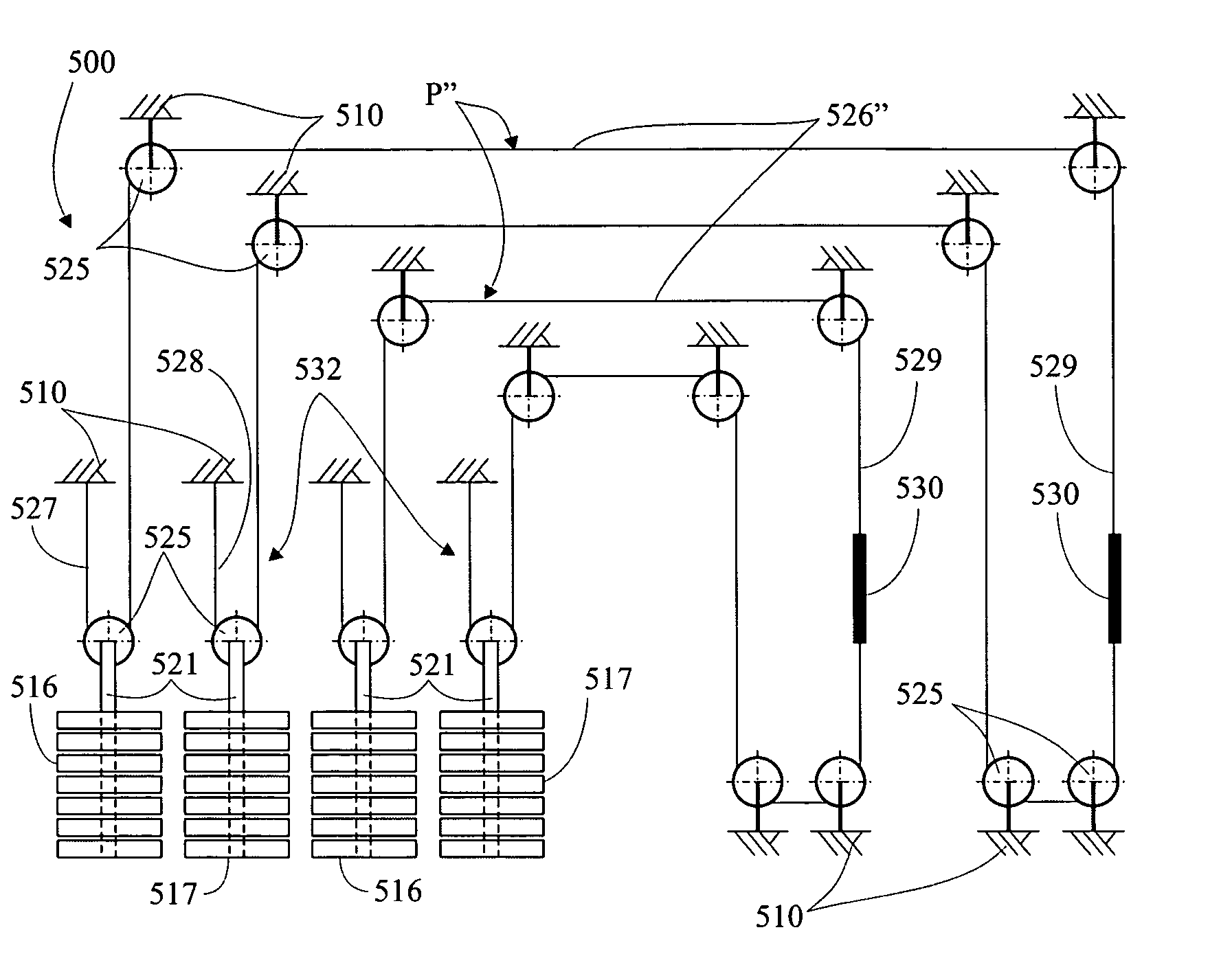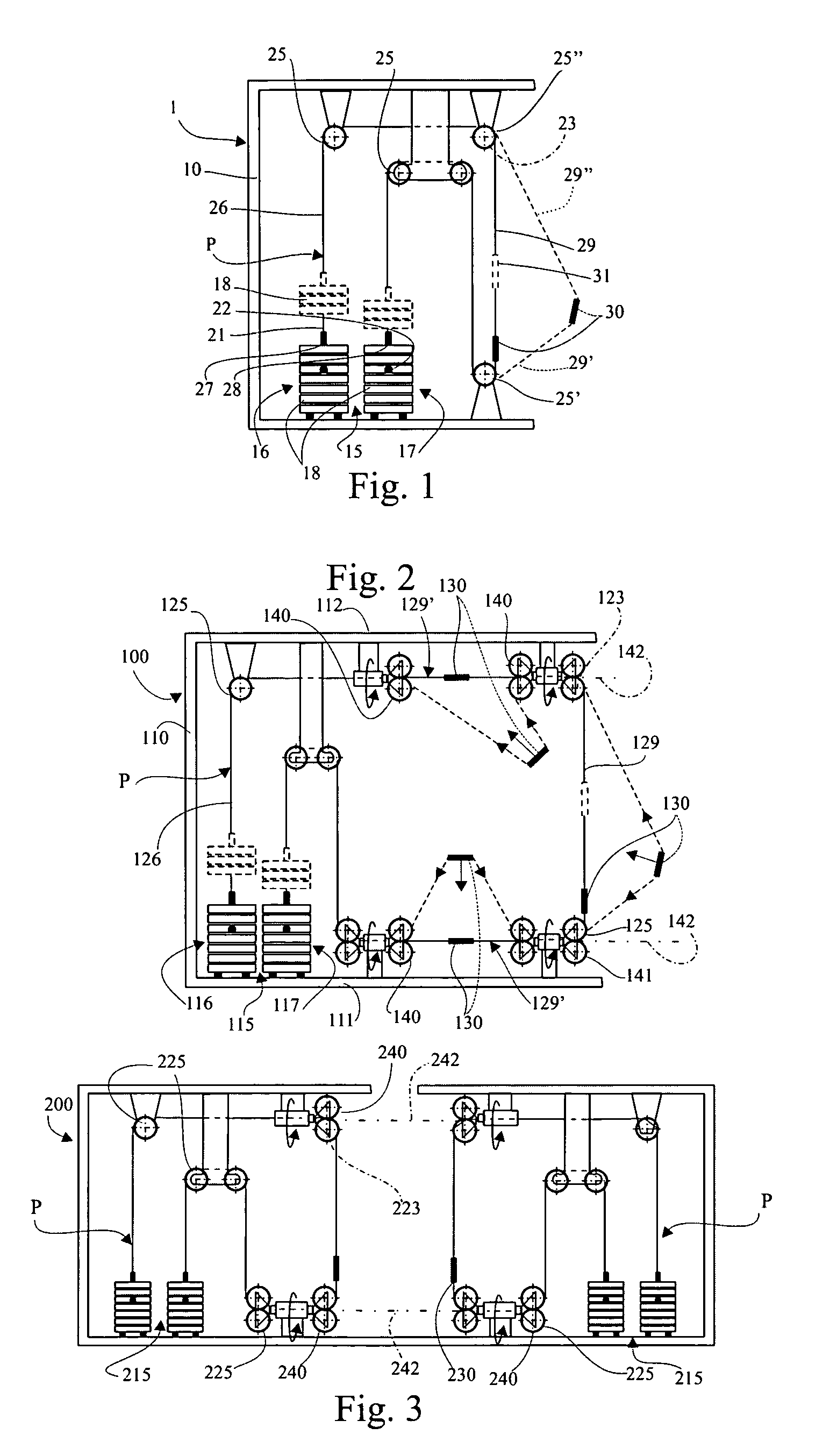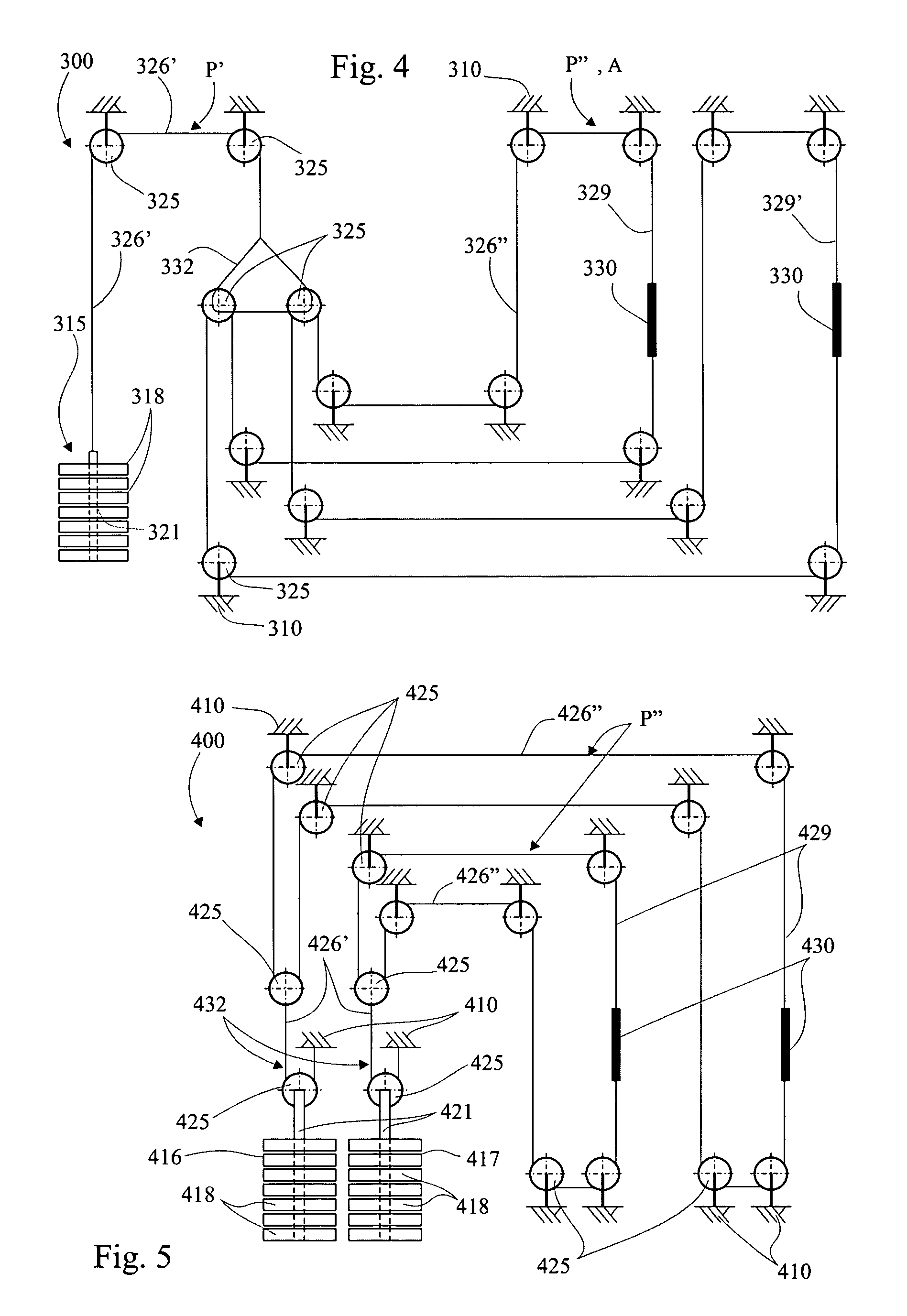Firstly it must be pointed out that in these cable operated weights machines a translatory movement is imparted to the set of weights selected between a lowered position and a raised position and that the
sensation of resistance offered by the set of weights selected for the exercise gradually diminishes as the movement imparted to the operating apparatus reaches completion. When the set of weights nears its highest point, the user experiences a reduction in the force to be overcome, which becomes—3-very evident whenever the user performs a movement which keeps the set of weights at a constant height. It is obvious that, when there is no movement of the
resistive load, the user does not perform any work which, as is known, is the product of a force times movement. Therefore, the user is aware, at least for a moment, of an interruption in the muscular exercise. This is the cause of dissatisfaction for an experienced user who is able to recognise his own degree of effort at all times and wishes to maximise it during the whole of the exercise. Normally this type of user prefers not to use single-function weights machines, which exercise just one particular
muscle group, and so-called “functional” machines which exercise several muscle groups at the same time. For the sake of
clarity, a functional
machine is a machine where the operating apparatus, which is connected to the load by means of a cable, allows the user to perform complex articular movements starting from a free posture and therefore simulate activities / movements which are usually performed during the carrying out of any sporting or working activity. The ends of the cable in these machines may be fixed or adjustable spatially. Examples of these machines may be found in the patents U.S. Pat. Nos. 6,238,323, 6,387,020 and 6,422,980.
At the end of this very short time interval, the load acts again on the operating apparatus suddenly, causing an unpleasant
sensation of increased load, which could also be damaging from a physiological point of view, in addition to causing discomfort, in the case where the user has set a large load.
Obviously the installation of this
cam, which must be varyingly designed for different types of machine, results in a considerably increase in the cost of the machine.
Moreover, it must be mentioned that the addition of this
cam is difficult to implement in machines where the operating apparatus consists of a
handle which must be gripped by the user, as in the case of so-called
pulley-type machines.
However, even by means of this solution it is not possible to eliminate completely the
sensation of lack of load in cable-operated weights machines, among other things because the machines which adopt this solution of increasing the length of the cable must multiply the load by the multiplication factor of the length of the cable in order to keep the value of the
resistive load unchanged.
It can be easily understood that this solution causes considerable problems in the case, for example, of
leg press machines where the load in terms of weights is frequently 250 kg in the case of machines without hoists.
In this case doubling of the load would result in machines where the single set of weights has a
mass of 500 kg and therefore results in positioning restrictions due to the act that it can be installed only in areas where the floor is suitably reinforced.
Otherwise, the user will find the machine unsuitable and, in addition to losing the time needed to set the machine to structural parameters appropriate for his / her physical size, risks suffering, in the event of imprecise adjustment, serious injury as a result of stressing his / her physical / muscular structure in a physiologically inappropriate manner.
In addition, these adjustments may not be easy to carry out, both because, in order to perform them correctly, it is necessary to have a clear idea of the notions as to how the muscles and limbs of our body work and because, on occasions, the adjustments may be complicated for users which are not familiar with the mechanisms present on the machine, as, for example, in the case of the functional machines of the type described with reference to the already mentioned patent U.S. Pat. No. 6,387,020 and the PCT application WO 01 / 66195.
In this type of machine also, which is acclaimed as being simple to use, it is required to perform adjustment of the machine before exercising and this is possible only with a considerable degree of constructional complexity.
Owing to the plurality of problems described above, cable-operated exercising machines both of the conventional type and of the
functional type are not easy to operate and the exercises which may be performed on these machines reproduce only partly the physiological movements and load patterns which occur every day during the practice of respective sporting or working activities.
 Login to View More
Login to View More  Login to View More
Login to View More 


